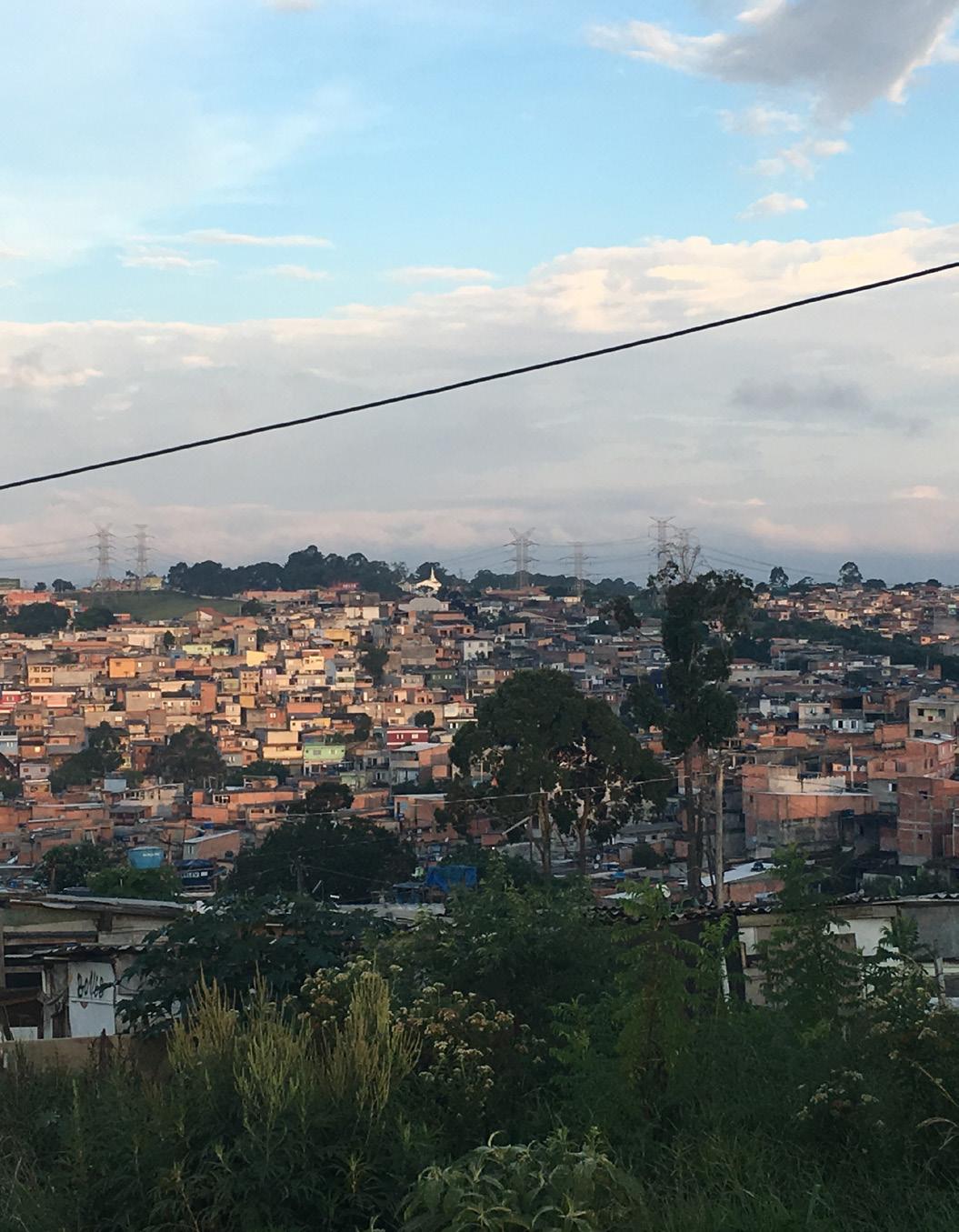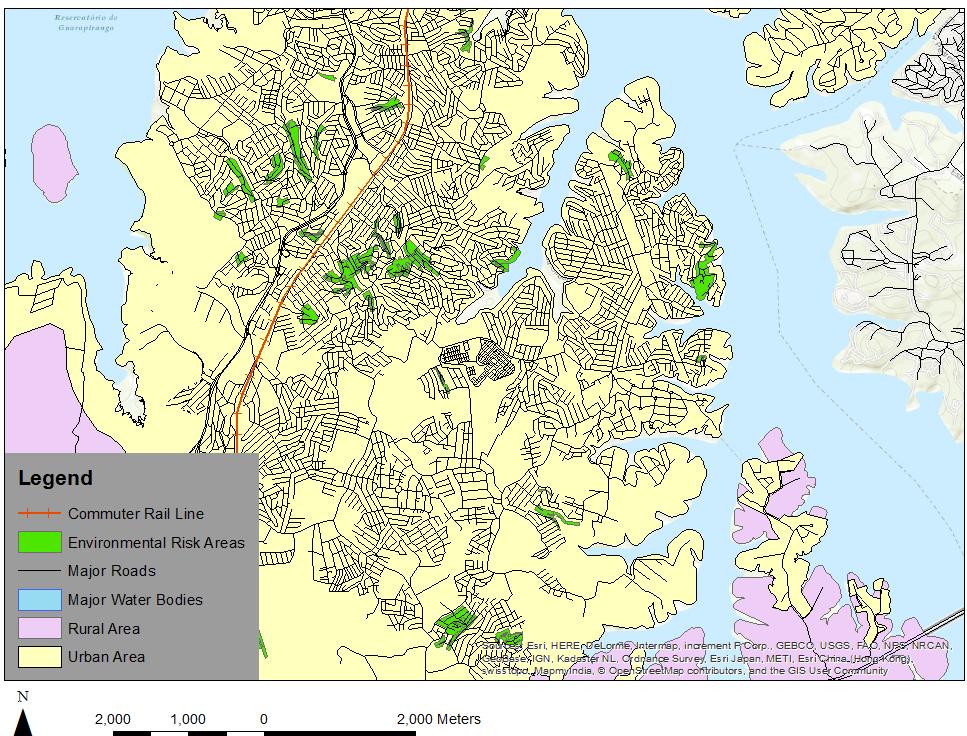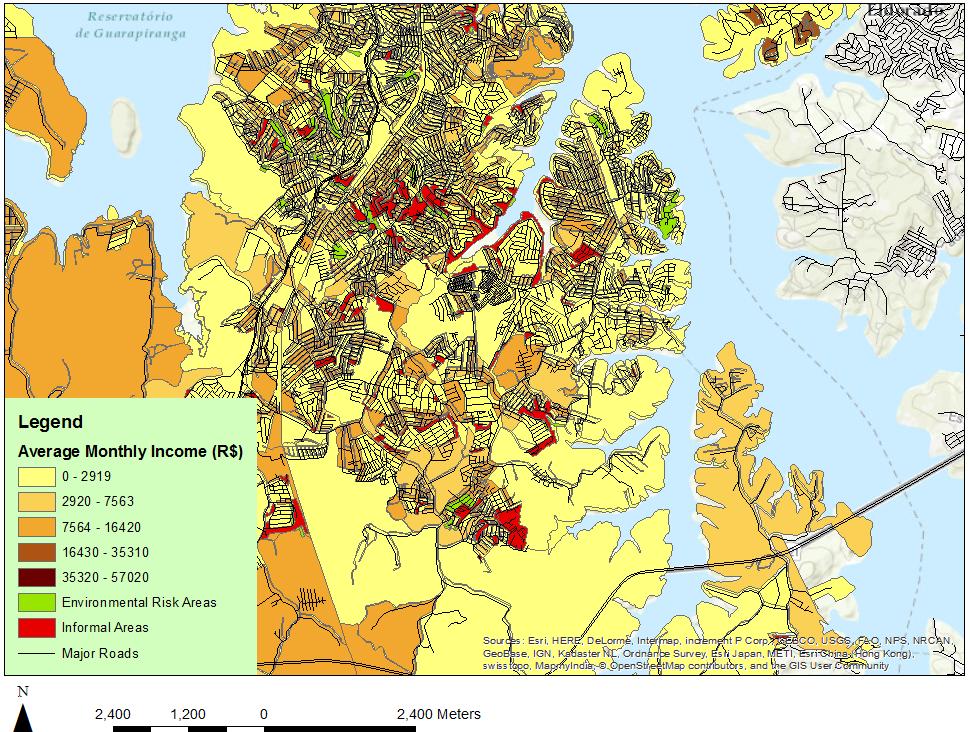
3 minute read
Peripheral Shelter in the Grajaú District
Grajaú, considered one of São Paulo’s poorest districts, is home to Ocupação Anchieta. This district, the largest in the city, struggles with a lack of municipal services, environmental degradation, and informality, and serves as just one example of peripheral urban growth.
29 (left) Periphery of Ocupação Anchieta, in Grajaú District.
Ocupação Anchieta (the Occupation) is located in the Grajaú District. Grajaú belongs to the Capela do Socorro sub-municipal office in the South Zone of São Paulo, 26 kilometers from Praça de Sé, a public square that is considered the center of São Paulo. Grajaú evolved from a collection of informal settlements in the periphery to a formalized and upgraded district. Although new land occupations continue to push the boundaries of urban growth further south, the Grajaú District remains an important site for simultaneous slum upgrading and formalization, while new land occupations continue to break ground.
With a population of 445,000, Grajaú is the most populous district in São Paulo, a city of approximately 12 million people. Grajaú is considered one of the poorer neighborhoods in the city. It is less dense than the rest of São Paulo, with 44.55 people in Grajaú and 74.57 people in São Paulo per hectare; however, Grajaú residents have less municipal public space per capita (2.16 hectares per 100,000 people compared to 2.58 hectares per 100,000 people in the city). When just sports and recreation are considered, Grajaú has 2.71 fields per 100,000 people as opposed to 3.38 fields per 100,000 people citywide (Prefeitura de São Paulo, 2017). Therefore, decreased density does not equate to more green space in Grajaú, but rather land is at a premium.
Considered one of the poorer neighborhoods in the city, Grajaú is typical of neighborhoods in the periphery São Paulo. Families and individuals, seeking an affordable place to live, formed human settlements at the edge of the urban fabric (Caldeira, 2016). The peripheral urbanization of Grajaú happened gradually. The original residents built their neighborhoods with the

30 Urbanized Area of Grajaú, São Paulo, Brazil.
resources they had at the time (de Oliveira, 2005). Formal city services, such as water, sewerage, and electricity, only came after Grajaú was no longer located at the edge of municipal peri-urban growth. The city of São Paulo slowly extended services to follow the spread of informal development. However, services have still not reached all informal areas.
Grajaú is just one example of peripheral urban growth and informality in São Paulo. Like many cities across the world, the heart of São Paulo is losing population to peripheral areas, like Grajáu. This migration places stress on municipalities, which play a role in providing peripheral neighborhoods with infrastructure while maintaining services in shrinking central areas (de Oliveira, 2005). The rising cost of

31 Average Monthly income of Residents in the Grajaú District, São Paulo, Brazil
living in and around the city center creates an incentive for people to move further away from Praça de Sé, where infrastructure does not exist (Caldeira, 2016). As people who can no longer afford existing São Paulo neighborhoods continue to form their own, the municipality must extend its reach to these peripheral informal settlements with basic infrastructure and services.
Many informal areas, like Grajaú, suffer from environmental degradation as people occupy the land. Before the Occupation began, Ocupação Anchieta, like most of Grajaú, was a greenfield, or an undisturbed piece of land, rich with vegetation. The legal protection framework has unintentionally contributed to this deforestation. The 1975 “law of water sources protection,” which meant to protect the






